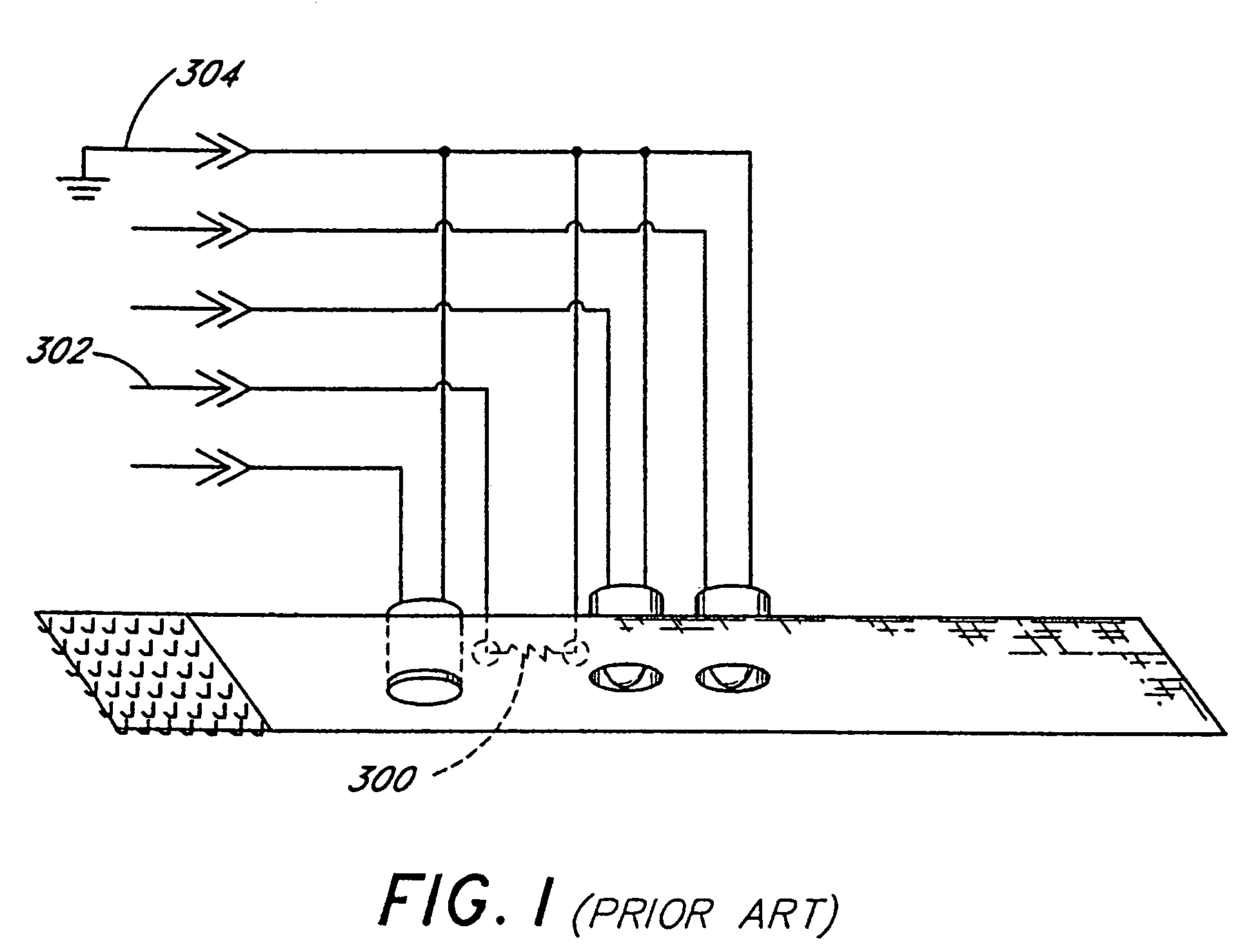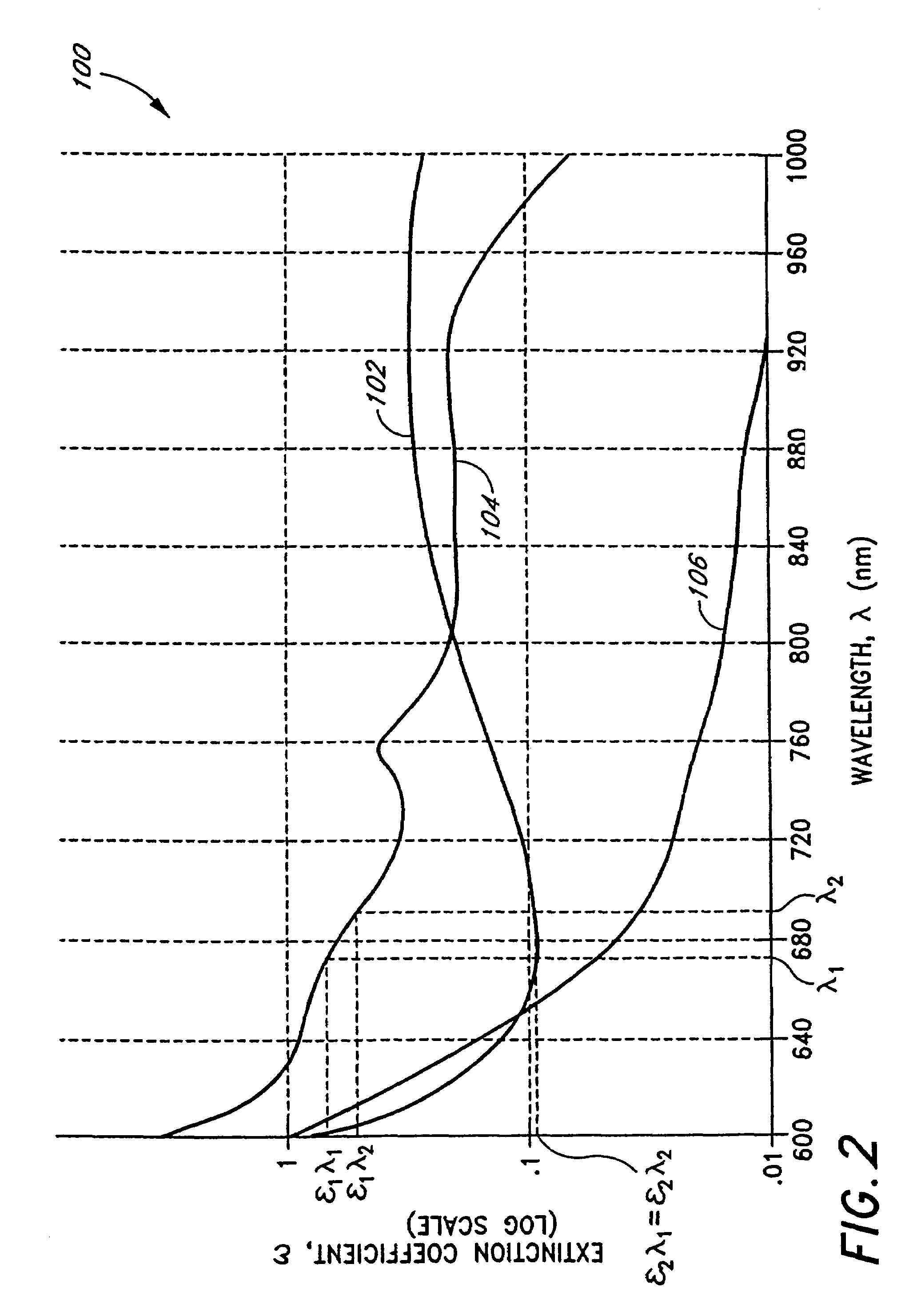Manual and automatic probe calibration
a manual and automatic technology, applied in the direction of fluorescence/phosphorescence, optical radiation measurement, instruments, etc., can solve the problems each led can add significant total additional cost, etc., and achieve the effect of adding expense to the oximeter system and complicating the design of the oximeter system
- Summary
- Abstract
- Description
- Claims
- Application Information
AI Technical Summary
Benefits of technology
Problems solved by technology
Method used
Image
Examples
Embodiment Construction
[0043]The present invention has applicability to the use of medical probes and LEDs in general. However, an understanding is facilitated with the following description of the application of the principles of the present invention to oximetry.
[0044]The advantages of noninvasive techniques in monitoring the arterial oxygen (or other constituents) saturation of a patient are well-known. In oximetry, light of a known wavelength is transmitted through a medium (e.g., a human digit such as a finger) under test. The light energy is partially absorbed and scattered by the constituents that make up the medium as the light propagates through the medium. The absorption and scattering of the light energy by any given constituent depends upon the wavelength of the light passing through the constituent, as well as several other parameters. The absorption by a constituent is characterized with what is known as the extinction coefficient.
[0045]FIG. 2 represents an exemplary graph 100 of the relatio...
PUM
 Login to View More
Login to View More Abstract
Description
Claims
Application Information
 Login to View More
Login to View More - R&D
- Intellectual Property
- Life Sciences
- Materials
- Tech Scout
- Unparalleled Data Quality
- Higher Quality Content
- 60% Fewer Hallucinations
Browse by: Latest US Patents, China's latest patents, Technical Efficacy Thesaurus, Application Domain, Technology Topic, Popular Technical Reports.
© 2025 PatSnap. All rights reserved.Legal|Privacy policy|Modern Slavery Act Transparency Statement|Sitemap|About US| Contact US: help@patsnap.com



